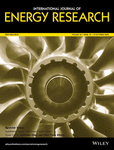Unraveling hydrogen production potential by glucose and xylose co-fermentation of Thermoanaerobacterium thermosaccharolyticum W16 and its metabolisms through transcriptomic sequencing
Funding information: China Postdoctoral Science Foundation, Grant/Award Number: 2018M640299; Fundamental Research Funds for the Central Universities, Grant/Award Number: HIT. NSRIF. 201859; Heilongjiang Postdoctoral Foundation, Grant/Award Number: LBH-Z18091; National Natural Science Foundation of China, Grant/Award Number: 31800115; State Key Laboratory of Urban Water Resource and Environment, Harbin Institute of Technology, Grant/Award Number: ES201810-01
Summary
Lignocellulosic biomass is a sustainable feedstock for hydrogen generation. However, the hydrogen producing bacteria usually prefer glucose most due to carbon catabolite repression, which hinders the biohydrogen production in practical. Thus, this study demonstrates that Thermoanaerobacterium thermosaccharolyticum W16 could produce 48.5 mmol L−1 hydrogen within 8 hours at an initial xylose concentration of 10 g L−1, which was close to 57.1 mmol L−1 hydrogen produced from glucose under the same condition. Further investigation with the supplement of xylose or glucose to the medium with sole glucose or xylose as carbon source confirmed that the strain W16 could consume glucose and xylose simultaneously at an average rate of 0.62 g L−1 h−1, however, the glucose or xylose consumption rate would be slowed down to some extent with the addition of counterpart. Intriguingly, the final hydrogen yield from glucose or xylose amended with the xylose or glucose were approximately the same (140.3 ± 3.7 mmol L−1). The similar yet interactive characteristic of glucose and xylose catabolism was attributed to the activities of different sugar transporters during the glucose and xylose co-fermentation of strain W16 as revealed by the transcriptomic sequencing. Thus, these findings suggest T. thermosaccharolyticum W16 is a promising candidate in lignocellulosic biohydrogen conversion, and comprehensively elucidate the glucose and xylose co-fermentation mechanism for further enhancing hydrogen production, paving a way for making a potential genetically engineered strain to further maximize the lignocellulosic biohydrogen production.




